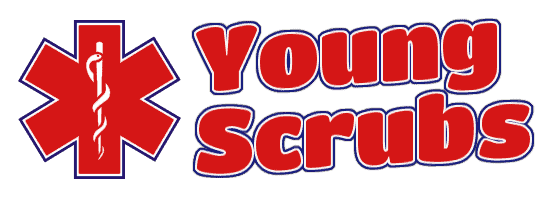This post may contain affiliate links, click here to learn more.
Embryology is a pre-clinical subject you have early on in med school. The emphasis on the subject varies greatly between universities. If the subject is actively taught, a textbook comes in handy.
The most popular options are Keith Moores The developing human and Langman’s Medical
If embryology is more of a side subject baked into your general anatomy studies etc. You can get by with a less comprehensive review book. High-yield embryology from the high yield series or the BRS embryology book comes highly recommended by many students (amazon links). These ones also come in handy if you need to study for the USMLE later.
Continue below to read my full reviews and why I prefer The developing human.
Remember that the subject is thought differently between universities. Therefore, you should consult your university’s book recommendations. Nevertheless, the books listed here should cover everything required for the average medical Embryology course. If you want to know more about the process I used to evaluate these books. You can read my article about evaluating medical textbooks.
Langman’s Medical Embryology
Now in its 14th edition, Langman’s textbook on medical embryology has been around since 1963. It is now one of the go-to textbooks in the field with its comprehensive material covering all aspects of the subject.
The material in Langman’s is divided into general embryology and systems-based embryology.
General embryology covers all of the material from the formation of germs cells to fertilization, to giving birth to a healthy fetus.
The systems-based embryology section covers the development of the different organ systems (cardiovascular, respiratory, digestive, etc.), including the limbs.
All this in-depth material is covered on a little more than 400 pages, which are also packed with illustrations and diagrams to help you understand the complex development of the embryo. In addition, it sometimes includes relevant real-life pictures to illustrate.
In summary, Langman’s embryology will provide everything you need to know to pass embryology in medical school. You can follow this link to head over to Amazon where you can get a sneak-peak into the book and check out its current pricing.
Moore’s The Developing Human
This embryology textbook is based on the work of Keith L. Moore, who is also the man behind the anatomy textbook clinically oriented anatomy, one of the anatomy textbooks recommended in my recommendation for anatomy books.
The first edition was published in 1973 and is currently printed in its 10th edition. Along with Langman’s, it is regarded as one of the go-to textbooks in the field of embryology.
Similarly, the material is grouped into general embryology and development and organ-specific embryology.
The general embryology and development are covered in the first 6 chapters, which include highlights for every week of development.
The remainder of the chapters concerns organ-specific development.
In addition, the book has a separate chapter on birth defects as well as on signaling systems during embryogenesis. (both of which can come in handy in some embryology courses).
The developing human gives you all the necessary in-depth information about the field of embryology. It will surely provide you with everything you need to know for your embryology course.
It did for me, as this was the book I had for my embryology course. I chose it because I found the illustrations and diagrams to be superior to those found in Langman’s.
This can be of big help when trying to understand the complex 3-dimensional development of the embryo.
You can check them out yourself by following this link to go to Amazon where you can get a preview into the book as well as check out the current pricing.
High-yield embryology and BRS embryology
The reason I comment on these 2 books together is that the differences between them are minimal.
Both are written by the same author and both serve as quicker review books. In addition, both are also suitable for studying for the USMLE Step 1.
The difference, which favors the BRS, is that it is a little more comprehensive and includes study questions following each chapter.
Either way, both deliver exactly what they promise. If you can settle for a review book, one of these should be your choice.
Follow this link to get a look at the study questions in the BRS and its current pricing on Amazon, after which you can compare it with the current pricing of the high yield-embryology (links to amazon).
Final thoughts
Although some students choose to go with both an in-depth textbook and a review book, I firmly believe you will get by with only one.
Just be careful to choose a book that suits your style of learning and how embryology is thought at your university.
There is a big reason why you shouldn’t get more than 1 textbook.
It is quite difficult to picture and understand certain stages of embryological development. This is because it demands a great deal of mentally constructing a 3-dimensional picture of the embryological development in your head.
The books try to supplement the textual information with diagrams showing the development, however, it can still be quite challenging.
Having another textbook explaining and showing the same thing in a slightly different manner usually won’t do the trick. To help you understand, you are better off watching good youtube videos on the topic.
I hope this helped you to choose the right embryology book for your medical studies. If you have any other embryology books to recommend, feel free to contact me through the email on the about page.




